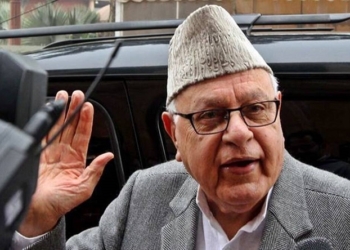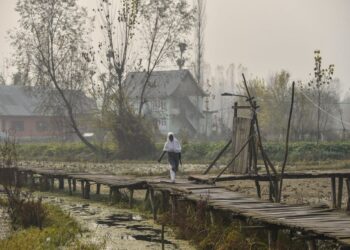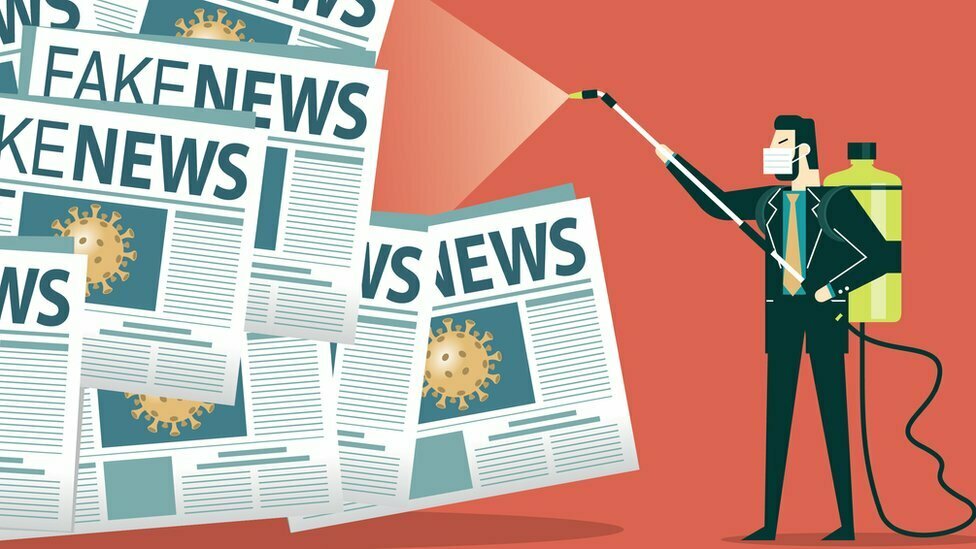
As a data editor and media trainer, Sanjit Oberoi has over a decade experience in the digital news and data space and has conducted media trainings across Asia.
Before working as a certified trainer of FactShala which is a news and information literacy programme, he worked with some of the top news sites — handling strategic editorial positions in organisations like TheQuint, Moneycontrol, IndiaSpend, Firstpost, FactChecker.
In a candid chat with Kashmir Observer, the fake news buster talks about the menace of misinformation and the need of strengthening the newsroom fact-checking system.
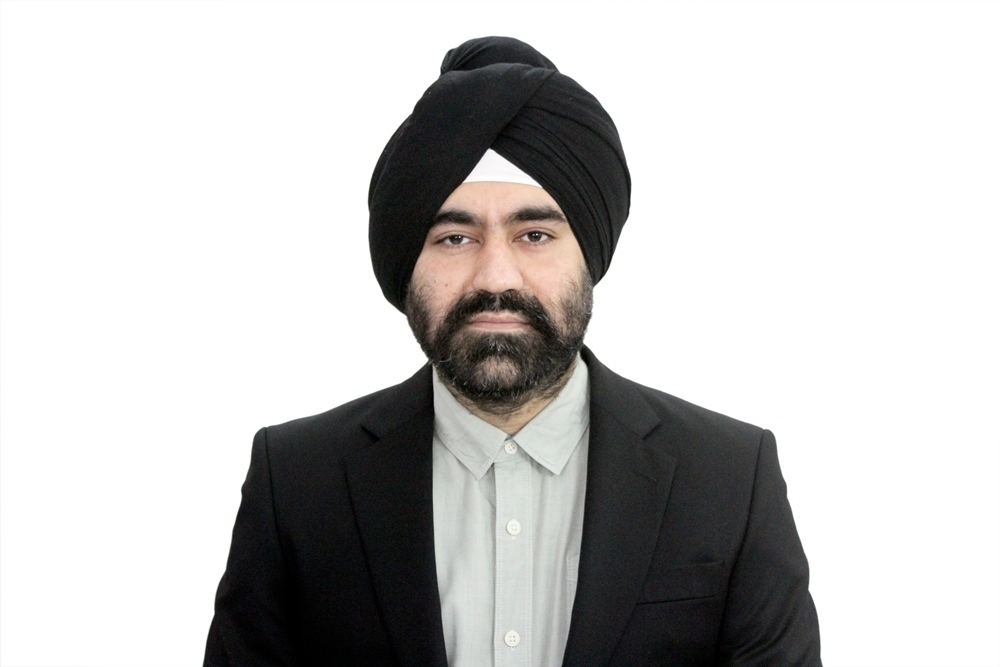
To begin with, let’s talk about FactShala.
FactShala is a news and information literacy programme launched in India by Internews in collaboration with DataLEADS with support from Google.org and the Google News Initiative.
This programme aims to educate the Indian people about media literacy and empower them to consume information critically. It’s designed to help people across India – especially in states with low literacy to understand the nature and characteristics of content published online.
I’m associated with FactShala as a trainer and we have trained to empower people to consume information critically.
Tell us something about media literacy and why is it so important?
Media literacy has become of paramount importance today. With the ever increasing rise in fake news, we need to train and empower citizens and journalists alike to counter this rapidly growing misinformation disease. This can only be done through keeping abreast of latest tools and skill sharing from experts in various domains.
FactShala aims to bridge this gap between the two.
As they say, media literacy does not mean “don’t watch”, it means “watch carefully, think critically”. What’s the FactShala’s philosophy of education?
FactShala has been built in mind not only on misinformation generated by conventional and social media but also on educating people about understanding media, analyzing content and equipping them with the skills needed to consume information critically.
Our training takes into account how one can think critically and out of the box. One has to be very observant when dealing with fake news and critical thinking helps to analyse patterns.
As BuzzFeed editor Craig Silverman puts it, “I also want to remind you of the first thing I talked about, which is that your brain is the most important tool. You have to be willing to look at the same sites and information again and again, to monitor them over time, and to apply the investigative mindset in order to find the points of connection or flaws.”
Does media literacy apply to social media and user-generated content? Also does it include online safety?
Media literacy is a holistic approach. It is inclusive and adopts a whole-of-society approach.
Internet was supposed to be a democratizing force, what we see is that we are exposed to inaccurate information. As misinformation and so-called “fake news” continues to spread rapidly on the internet, our society has become increasingly shaped by false information. Why are people so susceptible to fake news?
Unfortunately, many of us live in ‘filter bubbles’ or enter into ‘echo chambers’. We do not realise that we have been dragged so deep into these mines that regularly posting of articles makes us believe that they are true and we end up sharing them.
Most of the people who create fake news rely on evoking underlying biases that are already present in us and they stimulate that with morphed pictures or videos to shock or invoke a strong reaction.

As is rightly stated, misinformation has created a new world disorder. It’s big, it’s sprawling, it’s hard to get a handle on. It’s frightening what it can do to our lives. What is driving this misinformation?
We have seen the effect of misinformation across various areas like politics (elections), health, etc. Some of these can be potentially devastating and lead to harmful actions taken by communities.
An incident which happened a few years back led to the unfortunate death of two people who were just passersby when the village folks mistook them for ‘child snatchers’. The gruesome act was also recorded and shared online.
Fake news is deadly and needs to be curbed by putting in laws that penalise those who are creating them.
How is misinformation on social media evolving and how “fake news” and misinformation online is changing the society?
Social media is the place where fake news is thriving.
It’s unfortunate that a lot of people have suffered because of the spread of fake news. Many people have been wrongly quoted upteen times or past statements have been given a new twist to suit current ongoing news thereby stimulating propaganda.
How responsible are social media outlets for misinformation spreading on their platforms? How does technology enable the spread of disinformation? Also, what role should more traditional media play in elevating or debunking good or bad info?
Social Media platforms like Twitter, Facebook, etc have to play an important role in debunking or atleast bringing to light the page or person behind the spread of mis/disinformation as these are the very places where such news is thriving.
Facebook has tied up with fact checkers across the globe to ensure that there is some transparency coming up.
And how has misinformation troubled journalistic communities?
Journalists have been affected by the rise of fake news as they have gone out of their way to bring light to the truth.
Some of them have been intimated, attacked, while video journalists have been at risk for the evidence they hold.
As journalists, we need to use the citizen’s right to freedom of expression to keep them informed and that often leads us to go to areas by putting ourselves at risk to gather and investigate factual information to stop and curb wrongdoings.
Authorities need to understand that fake news should not be used to suppress journalist.
However, it is not one-sided.
Recent news in November 2020 tells us how two journalists have been booked for allegedly promoting enmity between different groups by spreading fake news. The journalists have said that they spoke what was told to them by the family.

No doubt technology has brought us to a point where we can no longer believe everything we hear, read, or even see. In this era of information disorder, tell us how we can navigate the pollution of information out there and avoid being duped by ‘fake news’.
Yes, that’s true. Technology has made it difficult to identify fake news but that very same technology also has tools we can use to identity if pictures have been picked up from another place, the source of a video, who is behind an account, etc.
All this does take time and effort but can be useful in identifying culprits and bringing them to book.
In this regard, how media literacy can help discern fake news?
Training is the key point here.
What is the importance and effectiveness of fact-checking? When is it helpful and is it enough to stop misinformation?
It is very useful at many levels. A full blown PR crisis can be averted if one knows how to fact-check. Many prominent folks and companies often tend to get misquoted or used in pictures or quotes they have not said.
In this case, having a fact-checker in your organisation will help in correctly dealing with a situation and averting bad press.
Fact-checking is now globally recognised as a principal branch of journalism and almost all leading newsrooms across the globe have dedicated fact checkers.
To understand the reach we can look at the initiative called International Fact-Checking Network (IFCN) by the Poynter Institute which looks to bring together fact-checkers worldwide.
And to answer whether it is enough to stop misinformation – No. Fact-checking alone cannot stop the spread of misleading information, nor can the media alone do this. We have to act as a society together and work on this.
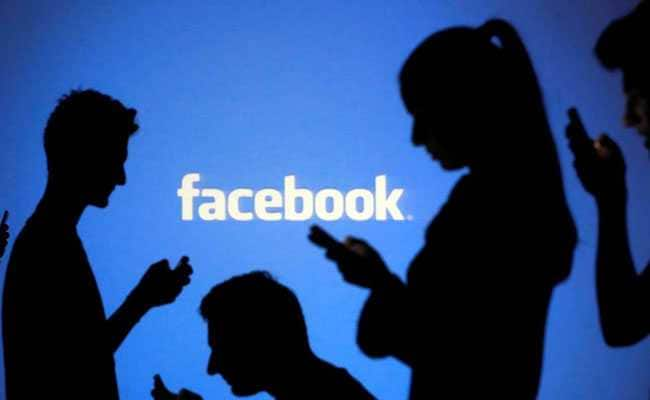
But who will check the fact checkers?
This is a good one.
I would say ‘other fact checkers’.
Today we have multiple fact checking organizations in India and almost everyone is tracking and correcting fake news. If one organization does put out a misleading statement, there are many others who would jump to correct them and this is also something we have seen in the past.
Misinformation has increased in times of pandemic. COVID-19 has been plagued by rumours, half-truths, and hoaxes. False and misleading information is spreading uncontrolled like the coronavirus itself. How has misinformation affected the pandemic?
I think initially there were too many rumors around the covid-19 pandemic. From hearing about the ‘Air Force’ planning to spray disinfectant from the sky to drinking cow urine as a cure.
The good news is that within a short period, fact check organizations are able to identify and debunk it before it spreads too far.
The only issue lies in whether the correct fact checked news goes to the same people who received or shared the fake news in the first place. I think that’s a bigger problem to solve.
Perhaps TV channels can take this up by mandatory spending 10 minutes during prime time to debunk fake news of the day.
“We’re not just fighting an epidemic; we’re fighting an infodemic,” said Tedros Adhanom Ghebreyesus, Director-General of the World Health Organization (WHO) at a gathering of foreign policy and security experts in Munich, Germany, in mid- February, referring to fake news that “spreads faster and more easily than this virus.” How did your team at the FactShala step up your communications efforts to make sure people have the best, most credible information?
One area where we have focused on is to train as many people as possible and tell them to verify before sending. There are many tools like ‘Google Reverse Image’, ‘Invid’, ‘archive.org’ etc which can be used to find out the sources of images and videos.
Of course, this takes time but it is important to know nonetheless. There are also sites like Google’s ‘Fact Check Explorer’ which picks up articles from various fact-check websites.
One should keep in mind the following points when unsure about things:
- Look at the domain name and URL
- Do check the ‘About Us’ section
- If there is an image, do a google reverse image search to see where else the image has appeared
- Keep track of Fact check sites like Boom Live, Alt News, Vishwas News, etc
- Become part of Facebook pages of Fact checkers and ask your queries there if you have a doubt.
- Write to fact check organisations to verify claims. Most of them have Whatsapp groups you can send your queries to.
Essentially, one will have to learn the skills and tools required to debunk the fake news pandemic.
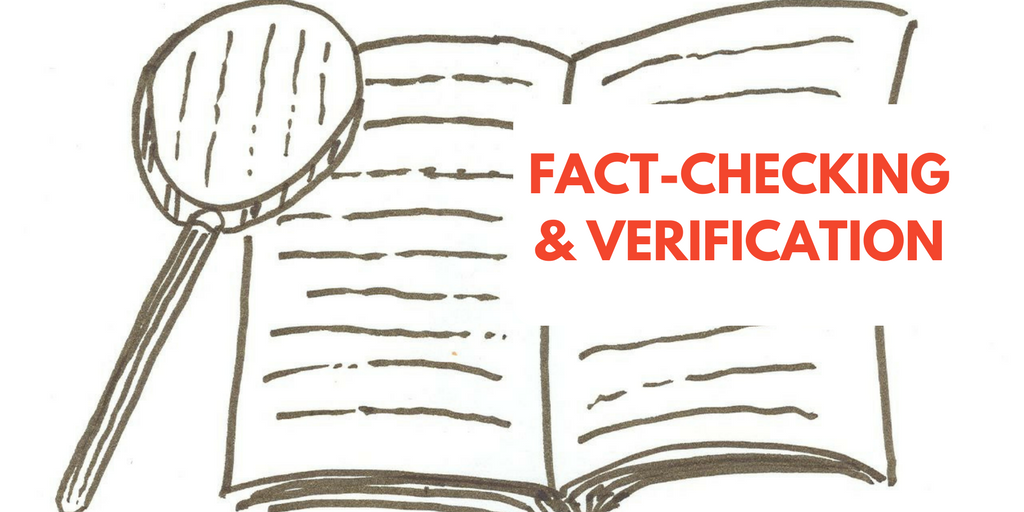
Tell us what are some of the tools that can be used to fight misinformation?
Tools one can use to verify Images & Videos:
- https://images.google.com/
- Search By Image by Armin Sebastian
- InVid extension (https://www.invid-project.eu/tools-and-services/invid-verification-plugin/)
- YouTube/Vimeo
- Socialcatfish.com helps you find people and verify information like images, email addresses, phone numbers and online profiles.
- Capturing: Snagit – Screen Capture & Reco Software
- InstaDP: Instagram profile pictures are very small. Using this tool, you can see anyone’s Instagam profile pic in high quality. You can search any account. (https://www.instadp.com)
- Archiving: WayBack Machine: Capture a web page as it appears now for use as a trusted citation in the future. https://archive.org/web
- Archive.is: It takes a ‘snapshot’ of a webpage that will always be online even if the original page disappears. (http://archive.is)
- Virus Total: Analyze suspicious files and URLs to detect types of malware, automatically share them with the security community (https://www.virustotal.com)
- Twitter Analytics Tools: FollowerWonk (https://followerwonk.com/) and for tweet beaver (https://tweetbeaver.com/).
What did your analysis of the content, origin and reach of the fake news spread during covid-19 suggest?
We have not conducted any research as of now since the pandemic began early this year and there is not enough data.
Follow this link to join our WhatsApp group: Join Now
Be Part of Quality Journalism |
Quality journalism takes a lot of time, money and hard work to produce and despite all the hardships we still do it. Our reporters and editors are working overtime in Kashmir and beyond to cover what you care about, break big stories, and expose injustices that can change lives. Today more people are reading Kashmir Observer than ever, but only a handful are paying while advertising revenues are falling fast. |
| ACT NOW |
| MONTHLY | Rs 100 | |
| YEARLY | Rs 1000 | |
| LIFETIME | Rs 10000 | |






